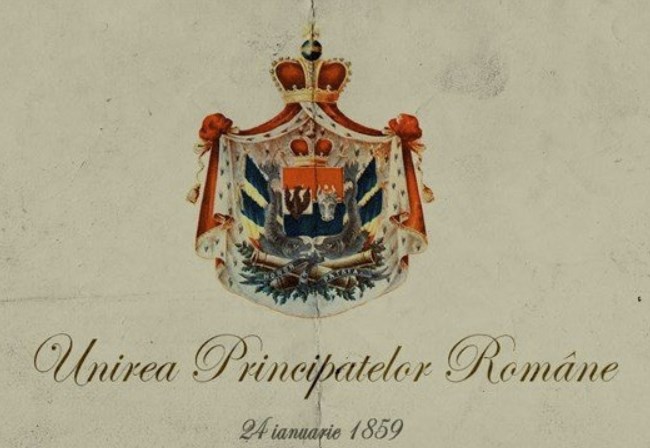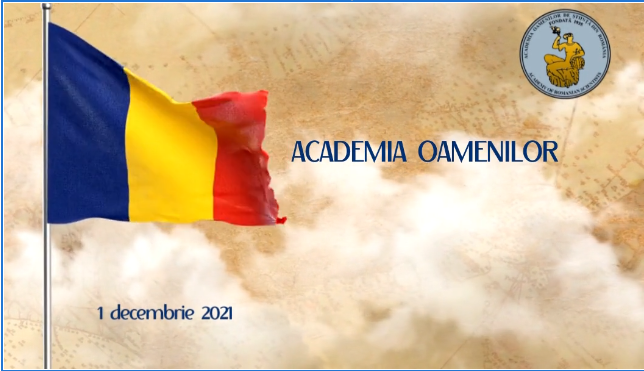On the occasion of 24 January, under the auspices of the Academy of Romanian Scientists, two events dedicated to the celebration of the Union of the Principalities took place. On 23 January, in New York, the Symposium of the Union of the Romanian Principalities – XXIXth edition, 163 years since the great historical event. On the day of the Union, in Iasi, took place Scientific Symposium “Cuza’s Union, a fundamental historical act in the constitution of European Romania”.

Symposium of the Union of the Romanian Principalities in New York was organized by the Academy of Romanian Scientists – USA Branch together with the Union of Professional Journalists of Romania, the Romanian Orthodox Metropolitanate of the Americas, the Romanian Institute of Orthodox Theology and Spirituality – New York and took place on Sunday, 23 January, at 3.00 pm, at the “Saints Peter and Paul Apostles” Church in the American metropolis.
The main organizer and host of the event was Fr. Prof. Dr. Theodor Damian, President of the American Branch of the Academy of Romanian Scientists and of the Romanian Institute of Orthodox Theology and Spirituality. At the opening, three historical songs with deep historical and patriotic reverberations were sung:
“Wake up Romanian”
,
“Anthem of Stefan Voda”, “Anthem of Bessarabia”.
The session, moderated by Prof. Nicole Smith, approached the Union of the Principalities from several perspectives: historical, political, cultural, spiritual, giving a complex and substantial picture of the event. The presentations, given by emblematic names of the Romanian diaspora in the USA, were: Ștefan STOENESCU (essayist, comparatist and translator, Ithaca, New York), “The Union of the Principalities as an event in Eminescu’s formative consciousness”; N. RUSU (critic and literary historian, editor-in-chief of the magazine Clear Light, New York), “Princess Ileana and the photographer Alexandru Petit on the Romanian unitary space”; Prof. Doru TSAGANEA (Professor of Mathematics at the Metropolitan College of New York), “24 January 1859, an important moment for the creation of the unitary and sovereign Romanian national state”; Prof. Valentina CIAPRAZI (writer, professor of French language and literature, LaGuardia College, New York), “Napoleon III and the Union of the Romanian Principalities”; Dr. Flaviu RIȚIU (St. Peter and Paul Church, New York), “The Union of Moldavia and Romanian Country in the European geopolitical context”; Theodor DAMIAN (writer; Professor Emeritus of Social Sciences and Education at the Metropolitan College of New York; President of the American Branch of the Academy of Romanian Scientists and of the Romanian Institute of Orthodox Theology and Spirituality, New York), “Archimandrite Melchisedec Ștefănescu and the Union of the Principalities”.

Scientific Symposium “Cuza’s Union, a fundamental historical act in the constitution of European Romania” was organized by the Academy of Romanian Scientists, with the support of the Section of Historical and Archaeological Sciences of the Iasi Branch of the AOSR, and the Institute of History “A. D. Xenopol” of the Romanian Academy, Iasi Branch and was held on 24 January, starting at 10.00 am, in the Costin Catargi House, H Building, Faculty of History of “Alexandru Ioan Cuza” University, in hybrid format (online and with physical presence). The moderators of the event were: Prof. Dr. Ion SOLCANU, President of the Historical and Archaeological Sciences Section of AOSR and President of the Iasi Branch of the institution and Prof. Dr. Gheorghe CLIVETI, Director of the Institute of History of the Romanian Academy, Iasi Branch.

The symposium was opened by Prof. Dr. Adrian BADEA, President of the Academy of Romanian Scientists, who, referring to the fundamental meaning of the historical moment and its significance for today’s Romania, said:”The date of 24 January 1859 remains a landmark on our political and spiritual map unfolding over time, an epochal event in the long and difficult centuries-long process of uniting Romanians into a single country. We believe that we must always return to the event of 24 January, not formally and festively, but through an act of substantial scientific reflection on the premises, framework, processes, personalities and meanings of the great historical act, which still offers us a great lesson in history.”
The event had a special guest, Mr. Bogdan Ilie CUZA (great-great-grandson of the Lord), who gave the lecture:
“Alexandru Ioan Cuza, creator of the Union of the Romanian Principalities and supporter of the first academic structure in Romania”.

The symposium in Iasi, dense in substantial communications, supported by personalities of education and academic research, has outlined a framework of historical and cultural exploration of a fundamental moment in the constitution of Modern Romania from different thematic perspectives and angles of interpretation.
The programme of the event included the following presentations:
Prof. Gheorghe CLIVETI (Director of the Institute of History of the Romanian Academy, Iasi Branch),
“The Union of the Principalities and Cuza’s reign under the European guarantee”;
Prof. Dr. Cristian PLOSCARU (Faculty of History, Al. I. Cuza University, Iasi), “The Union of the Principalities with a Foreign Prince. From diplomacy strategy to Romanian national project”; Prof. Petru ANDEA (Scientific Secretary of A.O.S.R.), “The reforms during the reign of Al. I. Cuza”Prof. Dumitru VITCU (University “Stefan cel Mare” – Suceava), “Cuza and the autocephaly of the Romanian Orthodox Church”Prof. Mihai COJOCARU (Faculty of History, “Al. I. Cuza” University of Iasi), “A fighter for the union of the Principalities: Anastase Panu”; Prof. Dr. Ion I. SOLCANU (Univ. Al. I. Cuza” Iasi), “The Romanian School in the counties of Moldavia – Cahul, Bolgrad and Ismail – and south of the Danube during the reign of Alexandru Ioan Cuza”; Prof. Dr. Corneliu LUNGU (Vice-President of the History Section of A.O.S.R.), “Documentary evidence on the union of the Principalities and the personality of Al. I. Cuza”; Prof. Radu Ștefan VERGATTI (Honorary Director of the “D. Stăniloaie” Interdisciplinary Research Centre), “The election of Al. I. Cuza ruler in Bucharest. The realisation of the “Little Union” of the Danube Principalities – a model for Western Europe”; Prof. Mihai DRECIN (University of Oradea), “The Echo of the Union of the Romanian Principalities in Transylvania (1859-1914)”, Commander (rtg.), Prof. Dr. Jipa ROTARU, “Modernization of the Romanian Army under the reign of Alexandru Ioan Cuza”Prof. Sorin IVAN, PhD, “Titu Maiorescu” University of Bucharest – “Alexandru Ioan Cuza’s contribution to the modernization of Romanian education”; Prof. Valentin CIORBEA (Ovidius University, Constanta), “The progress of the navy and ports under the reign of Alexandru Ioan Cuza”, Prof. Mihai BĂDESCU (ASE, Faculty of Law), “Alexandru Ioan Cuza’s reforming legislation – a premise for the formation of the modern Romanian legal system”Prof. Narcis-Stelian ZĂRNESCU, “A paradigmatic binomial: Cuza – Eminescu. Landmarks for a Philosophy of National History”
The two events,
Symposium of the Union of the Romanian Principalities
in New York and
Scientific Symposium “Cuza’s Union, a fundamental historical act in the constitution of Modern Romania”.
in Iasi, are part of the Programme of the Academy of Romanian Scientists for 2022, which includes a variety of projects, activities and events with national and international participation. Through its programmes and activities, the Academy of Romanian Scientists, an institution founded in 1935, participates in the process of building European Romania through education, science and research.
Communication and Public Relations Office of the Academy of Romanian Scientists
(Contact:
comunicare.aosr@gmail.com
)



















